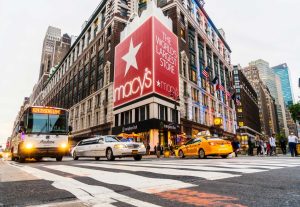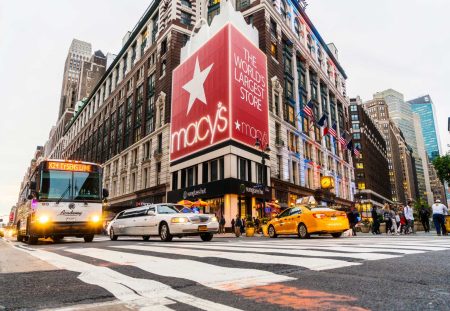Cardlytics, Inc. (NASDAQ:CDLX) Q2 2024 Earnings Conference Call August 7, 2024 5:00 PM ET
Company Participants
Nick Lynton – Chief, Legal & Privacy Officer
Jack Klinck – Chairperson of the Board
Amit Gupta – Chief Operating Officer
Alexis DeSieno – Chief Financial Officer
Conference Call Participants
Jaeson Schmidt – Lake Street Capital Markets
Kyle Peterson – Needham
Luke Horton – Northland Capital Markets
Jason Kreyer – Craig-Hallum
Operator
Good day, and thank you for standing by. Welcome to the Cardlytics Second Quarter 2024 Earnings Conference Call. At this time, all participants are in a listen-only mode. After the speaker’s presentation, there will be a question-and-answer session. [Operator Instructions] Please be advised that today’s conference is being recorded. I would now like to hand the conference over to your speaker today, Nick Lynton, Chief, Legal and Privacy Officer. Please go ahead.
Nick Lynton
Good evening, and welcome to the Cardlytics second quarter 2024 financial results call. Before we begin, let me remind everyone that today’s discussion will contain forward-looking statements based on our current assumptions, expectations and beliefs, including expectations regarding our future financial performance and results, including for the third quarter of 2024, our CEO transition plans, our capital structure and various operational and product initiatives and improvements.
For a discussion of the specific risk factors that could cause our actual results to differ materially from today’s discussion, please refer to the Risk Factors section of the company’s 10-Q for the quarter ended June 30, 2024, which has been filed with the SEC. Also during this call, we will discuss non-GAAP measures of our performance. GAAP financial reconciliations and supplemental financial information are provided in the press release issued today and the 8-K that has been filed with the SEC, which you can find in the Investor Relations section of the Cardlytics website. Today’s call is available via webcast, and a replay will also be available on our website.
Joining us on the call today, we have Cardlytics, Board Chair, Jack Klinck, who will provide some brief comments about this afternoon’s executive transition announcement as well as current COO and incoming CEO, Amit Gupta; and CFO, Alexis DeSieno. Following their prepared remarks, we’ll open the call to your questions.
With that, I’ll hand the call over to Jack.
Jack Klinck
Thanks, Nick. As I’m sure you’ve all seen from our announcement earlier today, the Board has appointed Cardlytics current COO, Amit Gupta to the role of CEO effective August 16, 2024. Amit will also be joining our Board of Directors at the same time. Karim Temsamani will be stepping down as Cardlytics CEO and Board member to pursue another professional opportunity.
On behalf of the Board, I would like to thank Karim for his contributions to Cardlytics during an important period of transformation. We are grateful Karim will help ensure a smooth transition, and we wish him the best. We are also excited to welcome Amit into his new role with Cardlytics, following a strong tenure as COO. He brings with him deep strategic product and operational expertise as well as industry experience, and he has played a key role in developing our strategy, scaling our platform and evolving our business. I am confident he will lead this business well, as we continue to execute on our transformation.
We have the right team in place to execute our strategy, and we are in the early innings of our transformation. Some of the important milestones achieved by our team under Karim and Amit’s leadership include, rightsizing our expense structure and improving our capital structure, which helped us deliver positive adjusted EBITDA in 2023 and improved our long-term financial stability.
Bringing new banking partners and advertisers to the platform, including Monzo in the UK and a large financial institution in the US, and launching Rippl, our retail media network on our Bridg platform, opening the potential for us to tap into new categories of marketing budgets, particularly across major CPG brands. I hope you’ll all join me in extending a warm welcome to Amit.
With that, let me turn the call over to you, Amit.
Amit Gupta
Thanks, Jack. I’m honored and excited to take on this new role at Cardlytics and look forward to working more closely with you, the rest of the Board and our broader team to continue to deliver on our mission. When I joined Cardlytics in January 2023, I was impressed at the caliber of talent, the power of our existing solutions and most importantly, the untapped potential of the company. I am confident in that potential today.
At our core, we have strong embedded relationships with some of the largest financial institutions giving us tremendous scale, and we have a clear path to be able to expand our network. With these relationships, we have unrivaled first-party purchase data, we believe that cardholder spend data is the best predictor of future behavior, which makes it incredibly valuable for advertisers.
As a result, we benefit from a flywheel effect of buyers, brands and banks, delighting cardholders with rewards, which leads to driving both loyalty and incremental spend for our advertisers and banks.
We are still in early stages of a significant transformation to evolve our business. I am confident we’re on the right path for three reasons: First, we have strengthened our financial profile to better facilitate continued strategic investment in the business through reducing our operating costs and improving our capital structure.
Second, we have a clear path ahead to better align our offerings with the modern advertising market and increased billings and consumer incentives. Last, we are clear-eyed about the challenges before us. We are not satisfied with our results, and we’re taking proactive steps to address these challenges. We need to better monetize the value we deliver to our buyers, brand and banks. That starts with better forecasting, delivery and pricing and delivering a platform that fully meets our advertisers’ needs.
Alexis will discuss the most recent quarter in greater detail in a few minutes. We missed our Q2 guidance primarily due to a miss on top line related to delivery issues. This miss was driven by fast-paced changes to our technology platform, which led to unpredictable delivery of the advertiser budgets. We are actively addressing these issues in the second half.
In the long run, these refinements to our platform, coupled with engagement-based pricing, will give us real-time data on campaign performance and enable us to optimize campaigns based on these signals to deliver better outcomes for buyers, brands and banks.
I’d like to call out some highlights for the quarter. We’ve made great progress in growing engagement. Consumer incentives grew 25% this quarter, meaning consumers are finding value in the offers we provide. As a reminder, our Northstar is redemptions, which materialized as rewards on a dollar basis in our financials.
Redemptions are a key indicator that our technology is delivering the most relevant offer to each person and driving value for our banks and advertisers. Driving engagement will continue to bring more marketing budgets to the Cardlytics platform, adding to the flywheel effect I mentioned earlier.
We have continued to make progress on the rollout of our new technology across three key areas, including: first, the adoption and refinement of our Ad Decisioning Engine, or ADE. Second, the launch of our Automated Insights Dashboard, and third, the launch of the Dynamic Marketplace, which includes the transition to our engagement-based pricing model.
First, on ADE, 80% of our banks have already onboarded, and we continue to make progress getting the remaining banks on the platform. We have also made progress in enhancing the logic model and signals that determine the offer decisioning.
Second, we are excited that we launched our Insights dashboard. Advertisers can now access on-demand insights such as share of wallet shifts. Insights will increase our overall billing opportunity through spend thresholds required for access as well as enabling advertisers ability to take action in real-time. We have 10% of advertisers using it by the end of last quarter and are on track to have the platform available for all advertisers by the end of the year.
Third, we launched a dynamic marketplace with over 20 live campaigns running with cost per engagement pricing and variable Pro as goals. To remind you, pricing budgets and offers have historically been static with advertisers priced on a static fee with fixed budgets that persists during the life of the campaign. That dynamic marketplace allows advertisers to see their campaign performance on a daily basis and make ongoing changes to their ROA goals, fees and budgets, which we believe ultimately will lead to a better performance of their campaigns and higher retention of those advertisers.
As part of this, we are shifting to an engagement-based pricing model. This pricing aligns with industry standards and will allow us to significantly improve visibility to advertisers. This model should appeal to advertisers that are accustomed to buying from other digital media platforms on a cost per clinic basis, and it will provide them with improved pacing visibility and control.
CPE is directly aligned to the real value we create for four buyers, brands and banks. We expect to have a majority of our accounts on engagement-based pricing models by the end of 2025. We are also expanding our addressable market for Rippl, which we power with our bridge data to help us tap into the rapidly expanding retail media budgets.
We are continuing to build out our nationwide footprint of individual shoppers and expect to have over 100 million profiles and 50,000 locations by year-end. In June, we published over 2,800 purchase-based audience segments on leading DSPs such as — the Trade Desk and LiveRamp providing CPG advertisers with more transparency into product-specific purchasing behaviors of consumers, while early days, we have already seen hundreds of advertisers engaged since launch. Rippl allows us to diversify our advertiser base by adding CPG brands to the mix and allowing us to tap into one of the largest portions of advertising budgets that our core Cardlytics business cannot effectively capture.
Looking ahead, we are excited to launch a large bank partner in the U.S. in the near future. This will help increase marketer scale faster via a larger and more engaged audience to whom we can serve offers. We are also committed to further growing our bank partnerships and are in active conversations with both new and existing partners.
Before I hand it over to Alexis, I want to reiterate my excitement for Cardlytics future. As card-linked offers become more important to banks, we are declared leader in our industry with a strong market position and a deep network of major financial institutions. No one else has the platform and deep relationships we have. We are well aware that progress along this path will not be linear, but we are confident we have the right strategy and are making the right moves to set Cardlytics on a much stronger course for the future. As excited as we are about this future, we know short-term results also matter, and you have our commitment that we won’t take our eyes off the ball in the months ahead.
I’ll now turn it over to Alexis to discuss the financials.
Alexis DeSieno
Thank you, Amit. This quarter was more challenging than expected. Although we continue to execute on our Northstar redemptions, our overall business experienced headwinds. While our top line grew more slowly than expected, we continue to be focused on tightly managing expenses and maintaining a strong balance sheet.
Now, turning to our specific second quarter results. My comments will be year-over-year comparisons to the second quarter of 2023, excluding entertainment, our former subsidiary that we sold in December 2023, unless stated otherwise. In Q2, billings reached $110.4 million, a 2% increase. The majority of the weakness was a result of our ongoing changes to our platform and technology, which led to unpredictable delivery rather than pipeline weakness.
While some level of underdelivery and overdelivery is inherent in any ad network, we are taking decisive action to address our operational challenges around forecasting and delivery. We experienced growth in our travel and entertainment and everyday sign verticals with standout growth from key airlines and hotels, but partially offset by downward movement in DTC and retail.
In parallel to scaling new logos, our churn rate, which is based on the number of advertisers that leave our channel, is at its lowest since before the pandemic. Consumer incentives, which we refer to as rewards, increased by 25% to $40.8 million due to enhancements in ADE and more performance ad serving.
Revenue, which is billings net of consumer incentives, but before partner share, was $69.6 million, a decrease of 7%. Revenue decreased due to a combination of lower-than-anticipated billings, largely due to underdelivery of budgets we have secured and higher-than-expected consumer incentive payments. We are getting more efficient at servicing the right rewards to the right user. In the short term, we will continue to see outsized rewards as engagement accelerates beyond top line growth due to these targeting and ranking improvements, but we expect this to normalize as we further refine our technology and pricing to better align rewards with returns.
While in the near term, this is pressuring results in the long run, we expect the benefits to come given the flywheel effect to our business. Rewards delayed cardholders driving loyalty and brands and with cardholders banks, new banks strengthen our network and advertisers benefit from consumer insights and measurable outcomes that drive growth.
We continue to be focused on adjusted contribution, which we believe is a better indicator for our business than GAAP revenue. Adjusted contribution was $36.4 million, up 1%. As a percentage of revenue, adjusted contribution margin was 52%, up 4% year-over-year, primarily due to bank mix and partially offset by higher consumer rewards.
Turning briefly to segment results. US billings were flat due to the previously discussed challenges with delivery. The UK continued to show very strong double-digit billings growth at 33%, partially due to our auto enrollment program with Lloyd’s and the launch of our newest banking partner, Monzo, as well as budget expansion. We also signed a large grocer, so we now have 4 of the 5 biggest grocers in the UK on the channel, which will continue to drive engagement.
Bridge billings were up 5% over Q1 but down 6% compared to last year due to the loss of a single existing customer. The redemption and partnership dynamics we’ve discussed do not intact bridge, so revenue is the key metric we use to assess the performance of this business. MAUs were $165.5 million for the second quarter, an increase of 3%, driven primarily by organic growth in the US in auto enrollment and a new bank in the UK.
ARPU was $0.42, down 13% as a result of the 25% increase in consumer incentives as we continue to deliver more rewards to cardholders. Adjusted EBITDA improved year-over-year from negative $3.8 million to negative $2.3 million this quarter. The U.K. delivered positive adjusted EBITDA for the third consecutive quarter.
Total operating expenses, excluding stock-based compensation, came in at $38.7 million. While we continue to believe in the changes we are making to our technology product and sales organizations to support growth over the long term, we are mindful of managing our expense base given our results. We expect operating expenses to remain below $40 million per quarter for the remainder of the year.
In Q2, operating cash flow was positive $4.4 million, and free cash flow was negative $0.4 million. On the balance sheet, we ended Q2 with $71.2 million in cash and cash equivalents, and we had $60 million of unused available borrowings under our line of credit.
As a reminder, we repaid the $30 million draw on our line of credit in April. I am also pleased to announce that we’ve extended our $60 million line of credit with the Bank of California through July of 2026 with a lower interest rate.
Now, turning to our Q3 outlook. For Q3, we expect billings between $100 million and $106 million, revenue between $56 million and $63 million, adjusted contribution between $32 million and $35 million, adjusted EBITDA between negative $6 million and negative $3.5 million.
Our billings guidance represents negative 7% to negative 13% growth, excluding our former subsidiary Entertainment. I’d like to provide some additional color on what we are seeing in the top line.
Our Q3 guidance does not reflect our ambition. We expect there to be continued disruption in Q3 as a result of the changes we are making to our ad platform, but we believe that driving consumer engagement and modernizing our technology are necessary to support our long-term goals. We are not assuming any material improvement to our delivery for purposes of guidance despite several initiatives underway.
From a pipeline standpoint, we are seeing continued strength in travel and everyday spend. And after rebuilding our restaurant team at the end of last year, we expect to see growth in Q3. Headwinds in retail performance will continue with budgets from top accounts flat year-over-year in that category.
The UK is expected to contribute double-digit billings growth in the quarter as we continue to capitalize on the incremental MAUs that unlock larger advertiser budgets. Bridge is expected to contribute positive growth as we continue to build out Ripple and establish relationships with our new CPG advertiser base.
We are expecting another quarter of elevated redemptions as our targeting continues to service the right rewards to the right users. We expect adjusted contribution to be lower due to the expected decline in billings and revenue with margins similar to previous quarters.
Adjusted EBITDA reflects the impact of our billings guidance while continuing to make strategic hiring decisions where we believe the return will be realized. We no longer expect double-digit billings growth for the full year 2024 or to be operating cash flow positive on a full year basis. We remain focused on our North Star redemptions, and we expect to continue to drive consumer engagement.
For 2025, we believe performance will accelerate as our operational execution improves and as we scale a major new FI partner, see continued strength in the UK and start to more fully realize contributions from Ripple. We believe all of these factors can support double digit billings and positive free cash flow in 2025. We are confident that our improved balance sheet and cash flow can enable us to continue to invest in the business and repay the remainder of the 2020 convertible notes in September 2025.
Now, I’ll turn it back to the operator for questions.
Question-and-Answer Session
Operator
Thank you. [Operator Instructions] Our first question comes from the line of Jacob Stephan with Lake Street Capital Markets. Your line is now open.
Jaeson Schmidt
Hey, guys. Jaeson Schmidt on for Jacob. Thanks for taking my questions. I just want to touch on the continued increased customer incentives you saw in the quarter versus historically. Are you finding that consumers are redeeming offers less if they’re below a certain discount threshold? Any color here would be helpful.
Alexis DeSieno
Thanks, its Alexis. No. Look, we’re focused on driving engagement more holistically. ADE is really all about targeting the right offers to the right users and therefore driving higher engagement and higher rewards. So it’s really not a function of necessarily lower rewards as you’re implying. What we’re really seeing is more and more people engaging with offers and redeeming them. So it’s actually the opposite. And so, what you’ll see in the guide is we’re actually assuming continued acceleration of the rewards to happen with slightly more reward payout as a percentage of billings next quarter. And we want to give the opportunity to test different dynamic rewards, which could be either higher or lower going forward.
Jaeson Schmidt
Got you. And then just as a follow-up. I know you outlined some of the investments in the platform, but how should we think about the incremental CapEx going forward?
Alexis DeSieno
CapEx should be relatively the same going forward. It’s primarily a function of capitalized software costs related to our people. And there’s not much else in terms of infrastructure costs. So I wouldn’t model any major increases.
Jaeson Schmidt
Perfect. Thanks a lot.
Alexis DeSieno
Thank you.
Operator
Thank you. Our next question comes from the line of Kyle Peterson with Needham. Your line is now open.
Kyle Peterson
Hey. Good afternoon, guys. Thanks for taking the questions. I wanted to start off with the commentary on the kind of transition to engagement-based pricing majority accounts by the end of 2025. I guess just could you give us a reminder as to what percentage of whether it’s billings or logos that are priced on an engagement basis today? And what does that transition in terms of, like, what’s the pace of that look like over the next several quarters?
Alexis DeSieno
No problem. So we have a very minimal number on our new dynamic pricing. We said around 20 accounts were on the dynamic marketplace this quarter. Last quarter, I think we said 5%. So it still remains a very low proportion of our spend. I think what you’re referring to is that we also have CPT pricing today, which is engagement-based and spend-based, but actually not what we’re moving towards fully. We’re moving towards any sort of engagement-based pricing, meaning an activation or click or a spend. So, today the answer is the newest pricing models in the dynamic marketplace are a very small portion of our billings, and we want to make sure that the marketplace is performing before we roll out more advertisers onto the platform. But this will happen by the end of 2025.
Kyle Peterson
Okay. That’s helpful. And I guess I just wanted to just switch over on the profitability side of things, at least in the interim, while consumer incentives are weighing on and some of these other pieces while we’re in transition here. Are there any levers that you guys could pull on the expense front to perhaps get back to free cash flow whether in EBITDA, whether it’s breakeven or positive? Or I guess, just how long are you guys willing to run at, I would say, EBITDA and burn rates similar to what you guys have guided to in the third quarter?
Alexis DeSieno
Yes. So there’s no shift in our cost discipline. We’ve spent a lot of time to make cost reductions over the last year and changes to our capital structure that would enable the investments that we’re making in a disciplined way. So what I will say is we’re committed to the long-term strategy, which requires investment to improve technology, products and sales and to strengthen our overall business. So we’re balancing that with prudent expense management.
And as I said, in the past, I’ve said operating expenses in the mid-40s. This call, I said is below $40 million for the quarter for the remainder of the year. So we are keeping an eye on it. But again, it’s a balance of investing for the long-term and prioritizing where we’re spending. Certainly, it’s our goal to accelerate top-line, modernize our platform and eventually generate a sustainable adjusted EBITDA and free cash flow over time. I think Q4 tends to be a stronger quarter for us. I’m not guiding Q4 today. But given holiday and historic performance, certainly something that could happen, and we’re keeping track of it.
Kyle Peterson
Okay. That’s helpful. Thank you.
Operator
Thank you. Our next question comes from the line of Luke Horton with Northland Capital Markets. Your line is now open.
Luke Horton
Yes. Hi, guys. Thanks for taking my question. Just wanted to touch on the delivery performance. When did you guys sort of start to notice these delays or disruptions and kind of what are you doing to fix this? And how long do you expect this to be disrupting the business for?
Alexis DeSieno
Yes. Thanks for the question. I think you started to see this in the results. Going back a quarter two, we alluded to the higher rewards last quarter. A has been a process. We’re doing a better job targeting. And it started with getting all the banks onto AWS and on the cloud so that we could be getting real-time data and pushing out updates to our product more real time, with that is coming, some of this disruption. But basically, we’re creating a more performant network. Some brands are performing much, much better than expected, some are not. But overall, it’s a more performant network, and that’s what’s leading to the higher rewards in the short-term.
And then I’ll let Amit talk about kind of the second half initiatives that we have. But what I will say is, clearly, from the guide, we’re not assuming any of these are taking place in Q3. We may start to see some with benefits in Q4, and I’ll let him walk through what we’re working through today.
Amit Gupta
Yes. Luke, thanks again for joining. I think as Alexis mentioned, we’re — we absolutely are kind of eyes wide open and where we’re heading. And specifically to fix some of the issues in near-term priorities, we’re focused on threefold. First of all, we’re fine-tuning our delivery. Secondly, we’re improving our forecasting because that’s where the whole process starts. And thirdly, we’re going to continue to diversify and deepen our advertiser base.
And — we’ve talked a lot about ADD, and there was a previous question, so I’ll address that as well. We are continuing to focus on onboarding clients to ADE, scaling our Insights dashboard and dynamic marketplace, which includes transitioning our customers to an engagement big pricing model, as Alex mentioned earlier, and that also helps us continue to grow our advertiser base.
Luke Horton
Got it. Okay. And then I guess just touching on the sales team. I know you guys have been investing in adding headcount in the sales side in rebuilding the agency funnel. Just wondering if this quarter was a continuation of that of adding headcount there and kind of the progress that’s being made there.
Alexis DeSieno
Yes. Last quarter, we said that we were investing in those two teams. It’s still really early stages for them as people are in place. But I would say we haven’t seen the impact from the agency yet. What we did see is we invested in the restaurant team about a quarter or two ago, and that actually did lead to stronger performance in restaurants. So some of these changes we’re making in sales are working, and we’re continuing to shift so that account management can really focus on that and sales can focus on sales rather than on account management. So I would say stay tuned for those changes. But in terms of if you’re asking on a cost basis, minimal increase next to next quarter.
Luke Horton
Okay. Got it. Well, thanks for taking the questions. I’ll take the rest off line.
Alexis DeSieno
Thanks.
Operator
Thank you. [Operator Instructions] Our next question comes from the line of Jason Kreyer with Craig-Hallum. Your line is now open.
Jason Kreyer
Thank you. Just as you’ve had early conversations with marketers on this engagement pricing model, curious if you’ve heard any pushback on pivoting to a new model? And then the follow-up to that is just why now on the pricing model? I think the current pricing model has been in place for almost a decade. So just curious what’s catalyzing the desire to have that change right now.
Alexis DeSieno
Okay. Firstly, I’ll take the first question. The answer is no. There hasn’t really been any push back. Advertisers appreciate that we need to make the shift to our pricing structure. It better aligns our offerings with industry standards and allows us to significantly improve visibility to them and to us and improve performance. So it’s something that they’re used to seeing an industry standard, as I said. So this model should really appeal to them, and they’re accustomed to buying on a cost per click basis from other platforms. So it really gives them more pacing visibility and control. The reason it’s taking longer is we really need to build the tech to support it at scale. And so that’s why you only see a small percentage on it today.
The second part of your question, I think, was more long-term why now. I can let Amit take that, but I think high level, we need to modernize our platform. Like staying in a static marketplace is not sustainable and is not the industry standard. We need to modernize and move to a more dynamic based pricing model, which ultimately will help us go head-to-head against some of the largest platforms. So there’s really no choice now is the time to kind of evolve our platform from something that hasn’t changed in 10 years.
So this is really going to enable us to have better forecasting, better delivery and a tighter set of outcomes going forward because we’ll be able to react real time to the performance we’re seeing rather than having to wait several weeks to receive the data on spend, which influences how that campaign is ultimately doing. So more real-time performance. I don’t know if you want to add anything, Amit.
Amit Gupta
Yes. I think as Alexis said, Jason, this is in some ways how advertisers are used to spending, right? So we’re doing a bit of a catch-up. And frankly, as we work with leading brands and leading advertisers across the country and beyond, they are actually quite welcoming of this change because this allows us to line up our platform and incentives more closely to their way of functioning and their incentives, right? And that, as Alexis said, it allows them to change their decisions, to modify and see what’s happening live or near in real-time, almost real-time and modified their decisions on how campaigns might be running and so on. So we’re moving in that direction, and that is the right direction for us to move as we scale the Cardlytics platform.
Jason Kreyer
As you talked about kind of real-time, I wanted to ask on the Insight dashboard. We’ve heard this from advertisers. It’s just a little bit of a sticking point, right? Like marketers want that transparency, want that real-time access.
So clearly, the evolution of that solution is great. And I think a step in the right direction. I’m just — I’m curious, how meaningful you think that can be towards helping fix kind of this billing cycle issue? Or what do you think the timeline is for that, helping drive better matching of billings and engagement performance?
Alexis DeSieno
Yeah. So there’s only 10% on as of Q2, which was our goal, so very happy with that result. I think the point of Insight dashboard is that, it really will drive retention and stickiness with these brands in order to get access to these insights, which really nobody else has. You have to have certain spend thresholds in terms of your advertising business.
And so we see this as one of the main — we know it’s every user like it. And it’s a real benefit to why you spend with us and the data analytics that you receive from us. So creating those spend thresholds really is driving ultimately retention, less churn and ideally higher budgets going forward as advertisers want to maintain access to the insights. I don’t know if there’s anything you want to add on it, if not no problem.
Amit Gupta
Yeah. I think, I’ll just kind of add on to what Alexis just said, Jason. Insights, is not new to us, right? We have a very deep-rooted culture of insights and a very powerful insight analytics team that drives a lot of value that clients or clients or advertisers really love to engage with. So this is not new to us.
What we’re trying to do as in our previous scripted comments, as we mentioned, as we move the business from more static to dynamic and more automated, this allows us to reach a larger scale of advertisers with a kind of smaller, let’s say, headcount footprint, if you will. And this is very much something that advertisers are asking of us, because this is an important ingredient in their decision-making in some cases, even beyond direct marketing and budgets.
Jason Kreyer
Thank you.
Operator
Thank you. And I’m currently showing no further questions at this time. I’d like to hand the call back over to Amit Gupta, for closing remarks.
Amit Gupta
Well, I’d like to thank the operator. And again, I’m honored that the Board has appointed me to lead Cardlytics through its next phase. As we’ve discussed today, I’m confident in the fundamental strength of this business and the strategy we’re implementing to better position ourselves for the future. I’d like to thank everyone for joining the call today, and for your time, and for your questions. Thank you.
Operator
This concludes today’s conference call. Thank you for your participation. You may now disconnect.
Read the full article here















